Prepare your response
Fail to prepare, prepare to fail: How the world responded (or didn't) to COVID-19
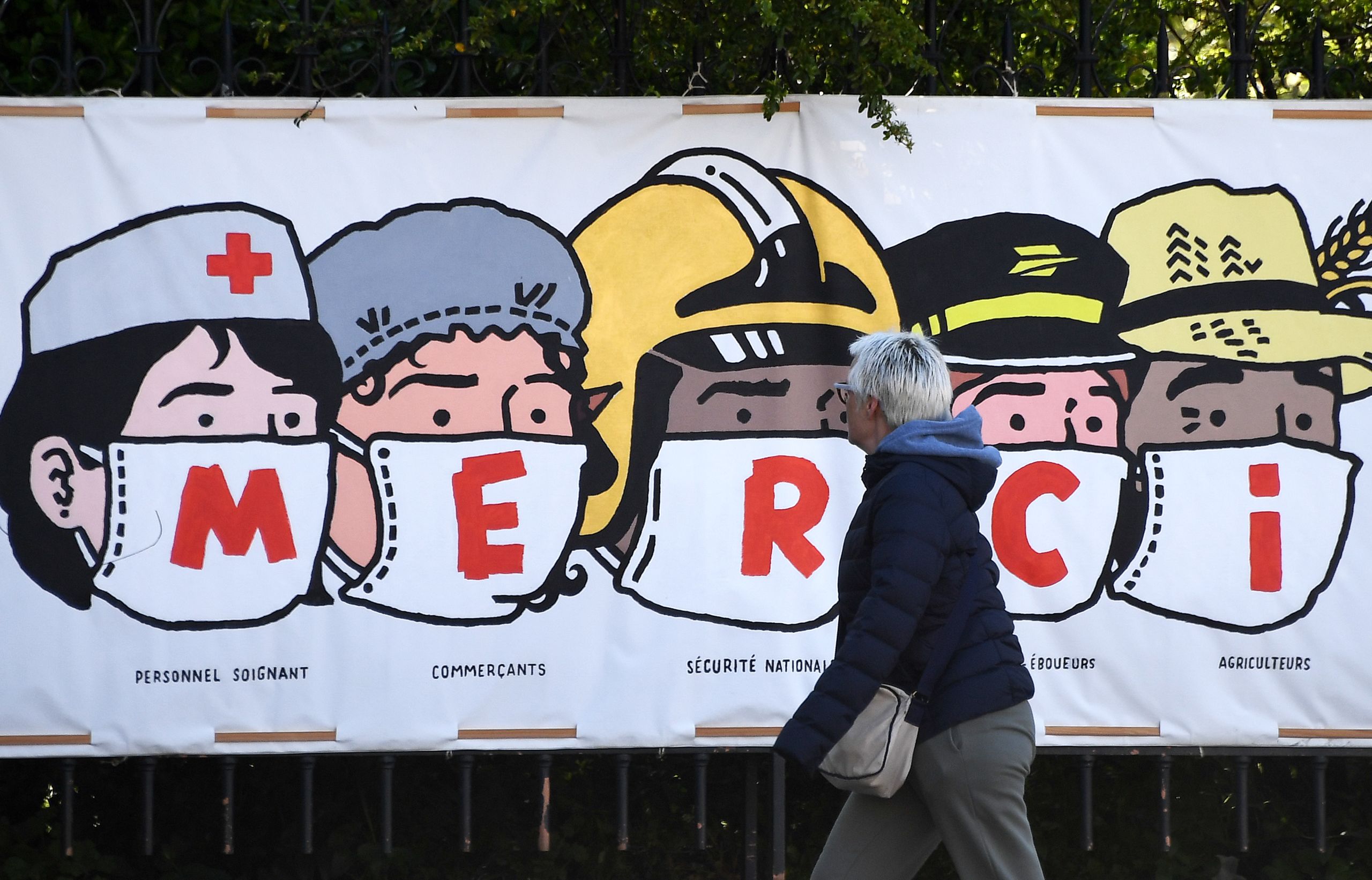
As countries across the world gradually – in some cases belatedly – retreated behind closed doors, it was boom time for the entertainment distributors: Netflix became so popular that it had to cut its broadcasting bit rates by 25 percent in Europe to ease the strain on bandwidth-stressed networks. Cooped-up customers, many freed from the obligation to work, seemed to revel in either escapism or what might be termed background research via documentary series like Pandemic and films like Contagion.
However, one slice of appointment viewing couldn't have been predicted a few months earlier, back in the age of innocence. By the end of March, the almost-daily World Health Organization (WHO) press conferences had become must-watch events for anyone intrigued – or horrified – by the spread of COVID-19. And on 27 March, WHO director-general Tedros Adhanom Ghebreyesus gave countries a masterly overview on how to fight the spread of COVID-19.
Speaking from behind his familiar semi-circular conference table in Geneva, his sidekicks for the day arranged at a socially safe distance to either side, Tedros addressed the camera and gave the world a six-step sequence to save their skins. The measures he suggested were:
- Expand, train and deploy your healthcare and public health workforce
- Implement a system to find every suspected case
- Ramp up production capacity and availability of testing
- Identify, adapt and equip facilities you will use to treat and isolate patients
- Develop a clear plan and process to quarantine contacts
- Refocus the whole of government on suppressing and controlling COVID-19.
As countries across the world gradually – in some cases belatedly – retreated behind closed doors, it was boom time for the entertainment distributors: Netflix became so popular that it had to cut its broadcasting bit rates by 25 percent in Europe to ease the strain on bandwidth-stressed networks. Cooped-up customers, many freed from the obligation to work, seemed to revel in either escapism or what might be termed background research via documentary series like Pandemic and films like Contagion.
However, one slice of appointment viewing couldn't have been predicted a few months earlier, back in the age of innocence. By the end of March, the almost-daily World Health Organization (WHO) press conferences had become must-watch events for anyone intrigued – or horrified – by the spread of COVID-19. And on 27 March, WHO director-general Tedros Adhanom Ghebreyesus gave countries a masterly overview on how to fight the spread of COVID-19.
Speaking from behind his familiar semi-circular conference table in Geneva, his sidekicks for the day arranged at a socially safe distance to either side, Tedros addressed the camera and gave the world a six-step sequence to save their skins. The measures he suggested were:
- Expand, train and deploy your healthcare and public health workforce
- Implement a system to find every suspected case
- Ramp up production capacity and availability of testing
- Identify, adapt and equip facilities you will use to treat and isolate patients
- Develop a clear plan and process to quarantine contacts
- Refocus the whole of government on suppressing and controlling COVID-19.
Patchwork reactions

Taken in isolation, these six suggestions may seem almost absurdly simple, but they were surprisingly necessary. In those first months, authorities across Europe and indeed the world had reacted in various ways: some with calm swiftness, others with a more chaotic approach, and still others with what might be described as denial.
By this point, the European response in particular had been a patchwork of action, ignorance and desperation. Switzerland took 21 days from its first case to lockdown, Spain took more than twice that – and had to tighten its lockdown a fortnight later as the daily death tolls soared towards 1,000.
Spain wasn't the only country taking its time. Despite being one of the continent's COVID-19 front-runners, France hesitated long enough to stage the local elections on Sunday 15 March, regarded in retrospect as a super-spreader event – of which more later. The UK didn't lock down until 52 days after its first case.
"We think we're cool-headed. We don't want to overreact, to lock up everybody in their houses"
Others eschewed the full curfew altogether. Although the Netherlands closed schools and bars just 17 days after its first case, its government preferred an "intelligent lockdown" based on "the 1.5-meter economy" – trusting the public to maintain physical distance. Praising his "grown-up country," prime minister Mark Rutte insisted in early April that "people are glad that they are treated as adults, not as children."
"We think we're cool-headed," said Louise van Schaik of the Clingendael Institute of International Relations. "We don't want to overreact, to lock up everybody in their houses. And it's easier to keep the generations apart here, because grandpa and grandma don't live at home with their children."
Nor were the Dutch alone in keeping their doors open. Sweden has operated a policy that its foreign minister Ann Linde described as "No lockdown, and we rely very much on people taking responsibility themselves." By 8 April, as the Swedish death toll spiked upwards, the WHO was urging the country to "increase measures to control spread of the virus, prepare and increase capacity of the health system to cope, ensure physical distancing and communicate the why and how of all measures to the population."
Taken in isolation, these six suggestions may seem almost absurdly simple, but they were surprisingly necessary. In those first months, authorities across Europe and indeed the world had reacted in various ways: some with calm swiftness, others with a more chaotic approach, and still others with what might be described as denial.
By this point, the European response in particular had been a patchwork of action, ignorance and desperation. Switzerland took 21 days from its first case to lockdown, Spain took more than twice that – and had to tighten its lockdown a fortnight later as the daily death tolls soared towards 1,000.
Spain wasn't the only country taking its time. Despite being one of the continent's COVID-19 front-runners, France hesitated long enough to stage the local elections on Sunday 15 March, regarded in retrospect as a super-spreader event – of which more later. The UK didn't lock down until 52 days after its first case.
"We think we're cool-headed. We don't want to overreact, to lock up everybody in their houses"
Others eschewed the full curfew altogether. Although the Netherlands closed schools and bars just 17 days after its first case, its government preferred an "intelligent lockdown" based on "the 1.5-meter economy" – trusting the public to maintain physical distance. Praising his "grown-up country," prime minister Mark Rutte insisted in early April that "people are glad that they are treated as adults, not as children."
"We think we're cool-headed," said Louise van Schaik of the Clingendael Institute of International Relations. "We don't want to overreact, to lock up everybody in their houses. And it's easier to keep the generations apart here, because grandpa and grandma don't live at home with their children."
Nor were the Dutch alone in keeping their doors open. Sweden has operated a policy that its foreign minister Ann Linde described as "No lockdown, and we rely very much on people taking responsibility themselves." By 8 April, as the Swedish death toll spiked upwards, the WHO was urging the country to "increase measures to control spread of the virus, prepare and increase capacity of the health system to cope, ensure physical distancing and communicate the why and how of all measures to the population."
Raise the drawbridge

The WHO usually prefers to advise than to criticize, and it is one of the key organizations that any country can call on while deciding its response to a pandemic. Certainly there is much for such a country to decide.
One of the first impulses is to raise the drawbridge: to close the borders. In the early months of the outbreak, an increasing number of border authorities refused admission to people arriving from China, and later other early sufferers of the disease that still wasn't named COVID-19.
"Travel restrictions can cause more harm than good by hindering info-sharing, medical supply chains and harming economies," insisted the WHO's Tedros, instead recommending screening at official border crossings.
On 12 March, things moved up a gear when Donald Trump announced a ban on travelers from the European Union's 26 Schengen-area countries; three days later, it was extended to include the UK and Ireland.
With hindsight, a more damaging consequence of border closure was the false sense of security it gave those behind the sealed doors. The pathology of COVID-19 was hiding it in plain sight: with many carriers asymptomatic and many others suffering what resembled a heavy cold, the number of reported cases stayed relatively low while the virus was still making its way around within the closed countries. The problem was now not immigration, it was internal migration.
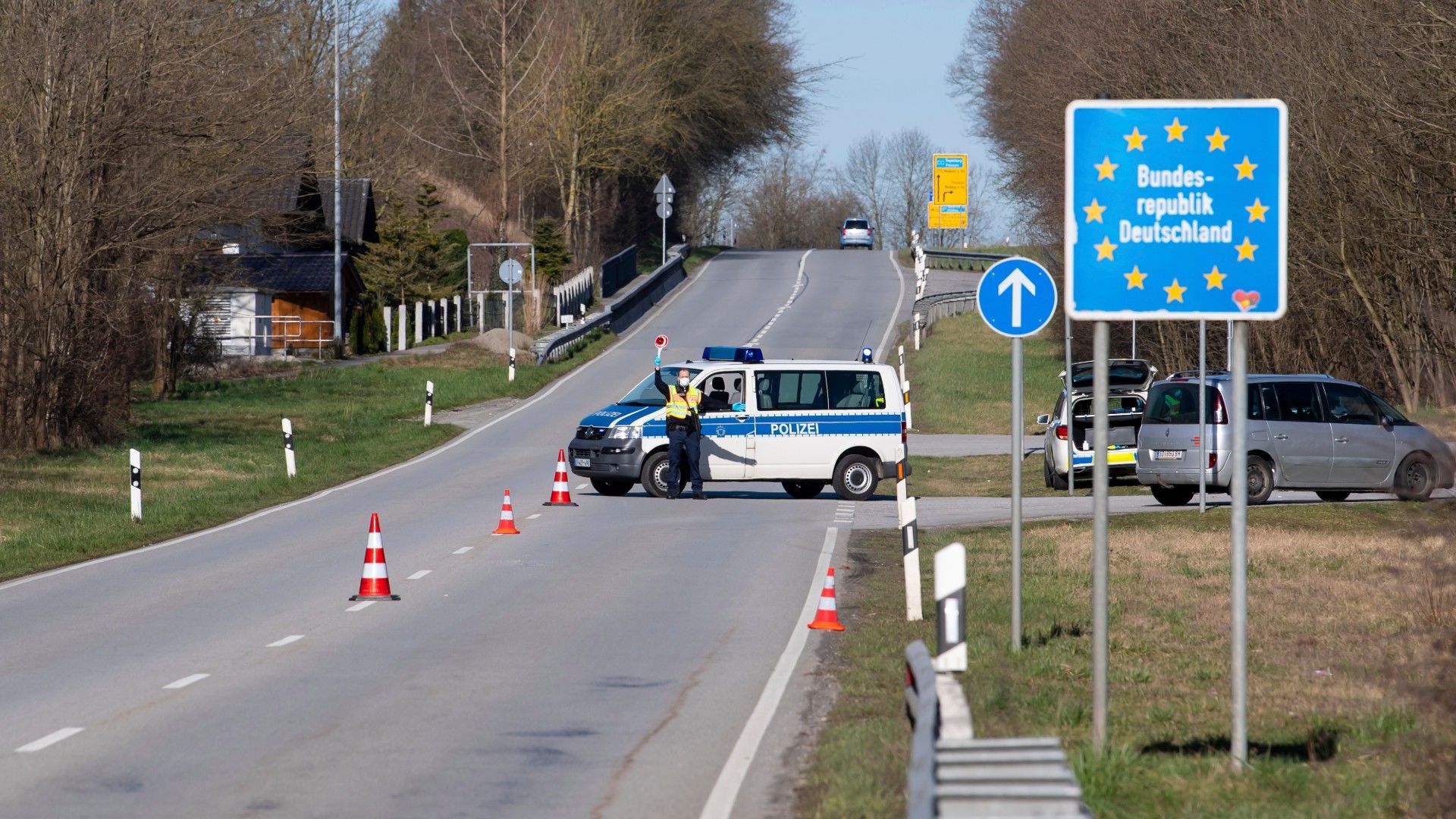
German police at a roadblock on the border with Austria, 16 March. /Sven Hoppe/dpa/AP
German police at a roadblock on the border with Austria, 16 March. /Sven Hoppe/dpa/AP
The WHO usually prefers to advise than to criticize, and it is one of the key organizations that any country can call on while deciding its response to a pandemic. Certainly there is much for such a country to decide.
One of the first impulses is to raise the drawbridge: to close the borders. In the early months of the outbreak, an increasing number of border authorities refused admission to people arriving from China, and later other early sufferers of the disease that still wasn't named COVID-19.
"Travel restrictions can cause more harm than good by hindering info-sharing, medical supply chains and harming economies," insisted the WHO's Tedros, instead recommending screening at official border crossings.

German police at a roadblock on the border with Austria, 16 March. /Sven Hoppe/dpa/AP
German police at a roadblock on the border with Austria, 16 March. /Sven Hoppe/dpa/AP
On 12 March, things moved up a gear when Donald Trump announced a ban on travelers from the European Union's 26 Schengen-area countries; three days later, it was extended to include the UK and Ireland.
With hindsight, a more damaging consequence of border closure was the false sense of security it gave those behind the sealed doors. The pathology of COVID-19 was hiding it in plain sight: with many carriers asymptomatic and many others suffering what resembled a heavy cold, the number of reported cases stayed relatively low while the virus was still making its way around within the closed countries. The problem was now not immigration, it was internal migration.
An inside job

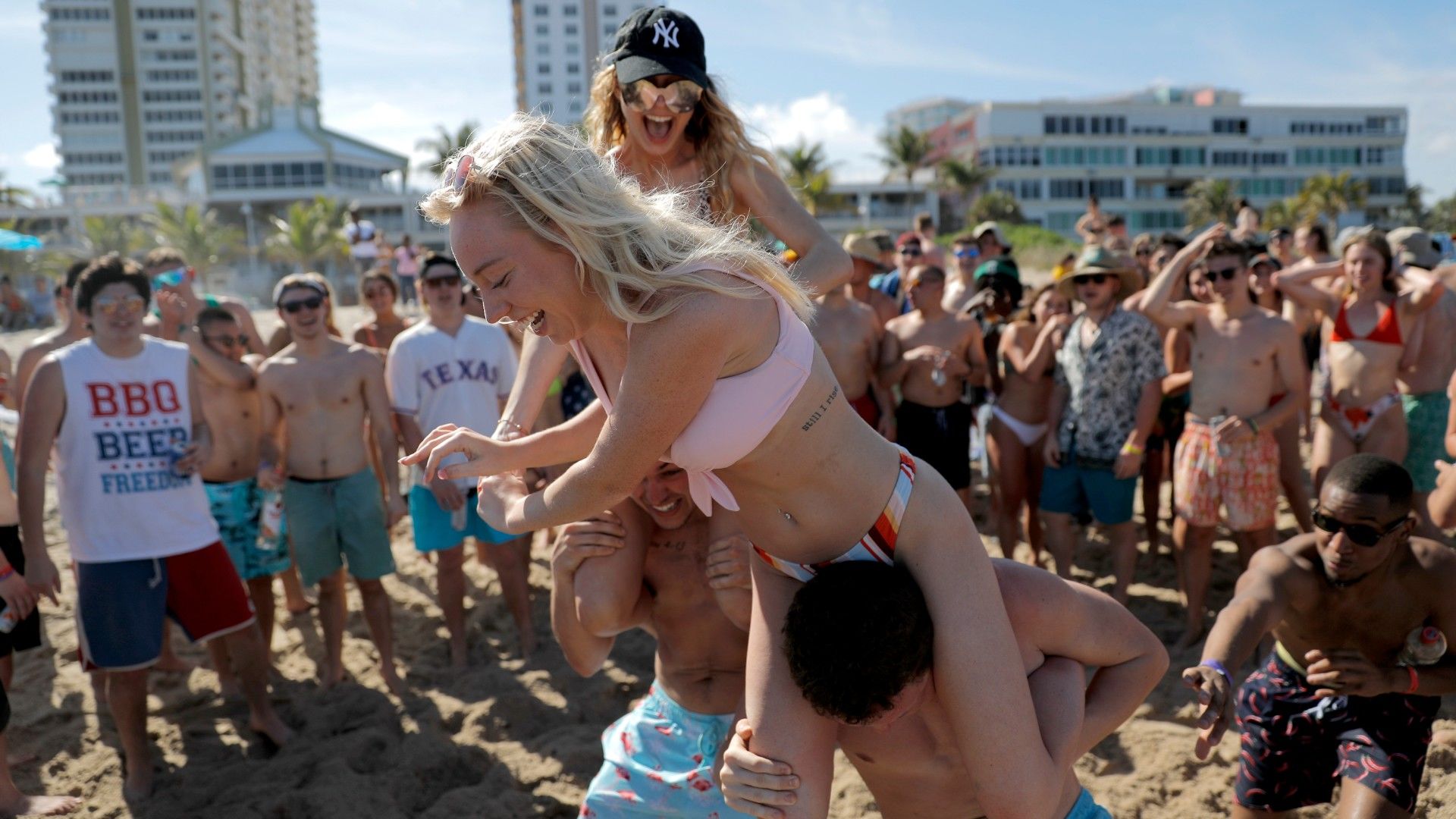
Spring break brought thousands of revelers to the beaches of Florida. /Julio Cortez/AP Photo
Spring break brought thousands of revelers to the beaches of Florida. /Julio Cortez/AP Photo
"If I get corona, I get corona. At the end of the day, I'm not going to let it stop me from partying"
Perhaps emboldened by the travel bans, many countries allowed mass gatherings that are now suspected of being super-spreading events.
The week after Trump's ban on flights from Europe, thousands of Americans celebrated spring break by congregating in tourist hotspots like Florida; interviewed by TV news crews, many were unapologetically unrepentant. One, a young man named Brady Sluder, declared: "If I get corona, I get corona. At the end of the day, I'm not going to let it stop me from partying."
With the Miami authorities eventually attempting to restrict movement – although governor Ron DeSantis initially refused to shut down the beaches – a young woman called Brianna Leeder complained: "It's really messing up my spring break. What is there to do here other than go to the bars or the beach? And they're closing all of it. I think they're blowing it way out of proportion." Within a month, the U.S. was well on the way to three quarters of a million COVID-19 cases and 40,000 deaths.
Not that Europe had proven itself immune to the hubristic determination to carry on as if nothing was different. On Sunday 8 March, Italian football descended into chaos when the sports minister attempted to suspend the top division as players stood in the stadium tunnel, only to be overturned by league bosses. UK's horse-racing Cheltenham Festival attracted a quarter of a million spectators between 10 and 13 March, and on Sunday 15 March the French persisted with local elections.
But with Italy's deaths skyrocketing, multiple countries in Europe soon shuttered museums, tourist attractions and sporting events as governments finally read the pandemic memo. Perhaps the final major organization to accept the inevitable was the International Olympics Committee: it took until 24 March to acknowledge that Tokyo 2020 would have to become Tokyo 2021.
"If I get corona, I get corona. At the end of the day, I'm not going to let it stop me from partying"
Perhaps emboldened by the travel bans, many countries allowed mass gatherings that are now suspected of being super-spreading events.
The week after Trump's ban on flights from Europe, thousands of Americans celebrated spring break by congregating in tourist hotspots like Florida; interviewed by TV news crews, many were unapologetically unrepentant. One, a young man named Brady Sluder, declared: "If I get corona, I get corona. At the end of the day, I'm not going to let it stop me from partying."

Spring break brought thousands of revelers to the beaches of Florida. /Julio Cortez/AP Photo
Spring break brought thousands of revelers to the beaches of Florida. /Julio Cortez/AP Photo
With the Miami authorities eventually attempting to restrict movement – although governor Ron DeSantis initially refused to shut down the beaches – a young woman called Brianna Leeder complained: "It's really messing up my spring break. What is there to do here other than go to the bars or the beach? And they're closing all of it. I think they're blowing it way out of proportion." Within a month, the U.S. was well on the way to three quarters of a million COVID-19 cases and 40,000 deaths.
Not that Europe had proven itself immune to the hubristic determination to carry on as if nothing was different. On Sunday 8 March, Italian football descended into chaos when the sports minister attempted to suspend the top division as players stood in the stadium tunnel, only to be overturned by league bosses. UK's horse-racing Cheltenham Festival attracted a quarter of a million spectators between 10 and 13 March, and on Sunday 15 March the French persisted with local elections.
But with Italy's deaths skyrocketing, multiple countries in Europe soon shuttered museums, tourist attractions and sporting events as governments finally read the pandemic memo. Perhaps the final major organization to accept the inevitable was the International Olympics Committee: it took until 24 March to acknowledge that Tokyo 2020 would have to become Tokyo 2021.
Fail to prepare...

It is the responsibility of leaders to take advice from where they can. Cooperation and coordination are essential: the pandemic crosses borders, and therefore so should the efforts to control it.
Before making decisions, authorities need open ears and minds, but there will be many voices chiming in. Crucially, the healthcare system will require significant strengthening. A respiratory disease like COVID-19 will require the acquisition of C-PAP machines and ventilators – the lack of which has become a problem in many European countries caught on the hop by the outbreak.
However, standard-issue material like personal protective equipment (PPE) can hardly be designated a surprise requirement, while the widespread shortages of regular drugs – including painkillers and the muscle relaxants which aid intubation and the inducing of comas – suggest that some authorities have not planned wisely.
As the old phrase has it: if you fail to prepare, then prepare to fail. In October 2016, the UK government staged a pandemic-readiness drill codenamed Exercise Cygnus, based on epidemiological modeling of a theoretical H2N2 influenza virus; it suggested that the National Health Service (NHS) would collapse due to lack of ventilators and critical care beds.
At a meeting on 26 April 2017, Public Health England's director for health protection Paul Cosford said a report "setting out the learning and recommendations" from Cygnus "was in the process of being finalized", but this has never been published.
However, some suggestions have been passed down. One report shared with the Red Cross stressed the need "to drill down into the exact actions that the military, police, fire service, local authorities, and the voluntary sector could take to keep systems running and to keep as many people alive as possible."
That flexibility is vital to any country's pandemic response. Besides attempting to recruit front-line workers for healthcare, police and the military, it is useful to be able to redeploy these to wherever the need is greatest. Instilling a sense of unity can help: beyond the welcome social glue of doorstep applause for health workers, members of the public can be encouraged to volunteer as home helpers to lessen the burden.
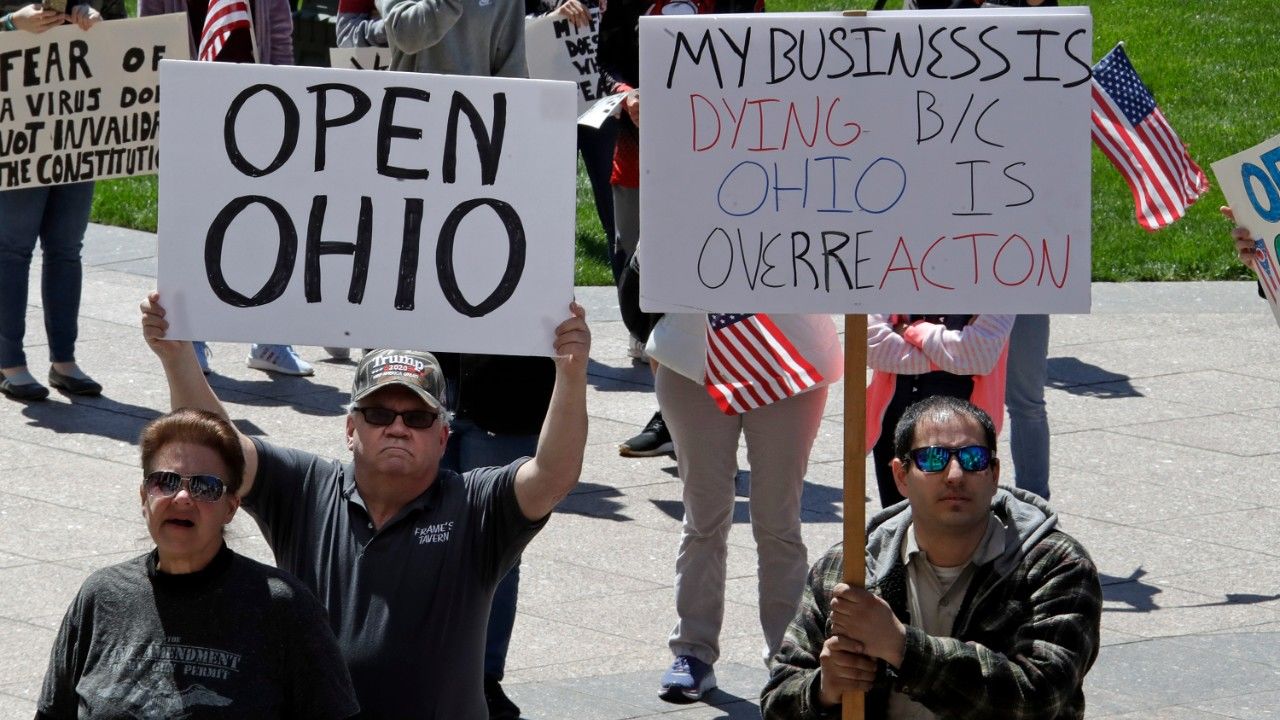
Protesters against the stay-at-home order in the U.S. state of Ohio. /Gene J. Puskar/AP Photo
Protesters against the stay-at-home order in the U.S. state of Ohio. /Gene J. Puskar/AP Photo
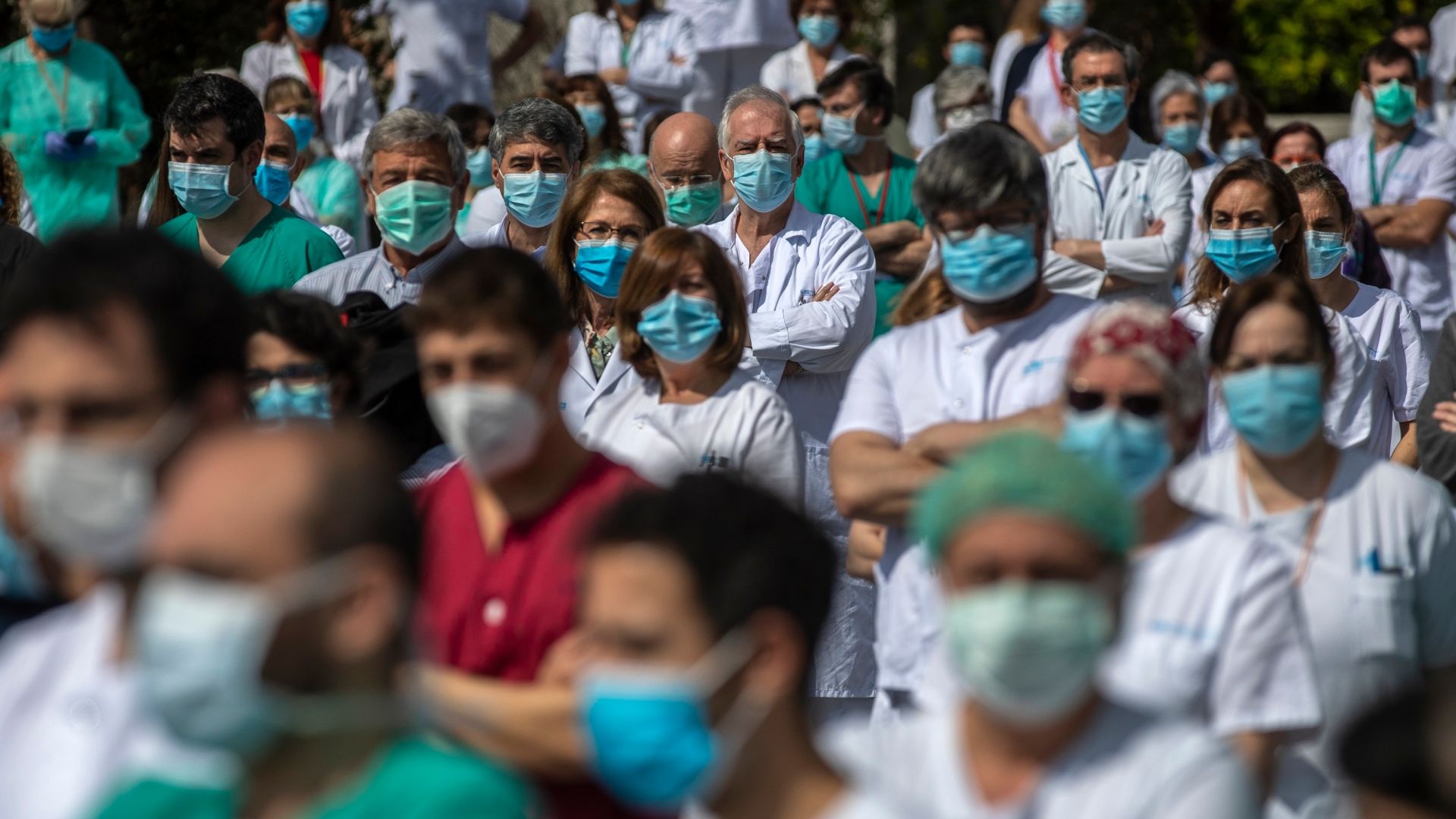
Health workers at La Paz hospital in Madrid, Spain, observe a memorial minute's silence, 20 April 20. /Manu Fernandez/AP Photo
Health workers at La Paz hospital in Madrid, Spain, observe a memorial minute's silence, 20 April 20. /Manu Fernandez/AP Photo
It is the responsibility of leaders to take advice from where they can. Cooperation and coordination are essential: the pandemic crosses borders, and therefore so should the efforts to control it.
Before making decisions, authorities need open ears and minds, but there will be many voices chiming in. Crucially, the healthcare system will require significant strengthening. A respiratory disease like COVID-19 will require the acquisition of C-PAP machines and ventilators – the lack of which has become a problem in many European countries caught on the hop by the outbreak.

Protesters against the stay-at-home order in the U.S. state of Ohio. /Gene J. Puskar/AP Photo
Protesters against the stay-at-home order in the U.S. state of Ohio. /Gene J. Puskar/AP Photo
However, standard-issue material like personal protective equipment (PPE) can hardly be designated a surprise requirement, while the widespread shortages of regular drugs – including painkillers and the muscle relaxants which aid intubation and the inducing of comas – suggest that some authorities have not planned wisely.
As the old phrase has it: if you fail to prepare, then prepare to fail. In October 2016, the UK government staged a pandemic-readiness drill codenamed Exercise Cygnus, based on epidemiological modeling of a theoretical H2N2 influenza virus; it suggested that the National Health Service (NHS) would collapse due to lack of ventilators and critical care beds.
At a meeting on 26 April 2017, Public Health England's director for health protection Paul Cosford said a report "setting out the learning and recommendations" from Cygnus "was in the process of being finalized", but this has never been published.

Health workers at La Paz hospital in Madrid, Spain, observe a memorial minute's silence, 20 April 20. /Manu Fernandez/AP Photo
Health workers at La Paz hospital in Madrid, Spain, observe a memorial minute's silence, 20 April 20. /Manu Fernandez/AP Photo
However, some suggestions have been passed down. One report shared with the Red Cross stressed the need "to drill down into the exact actions that the military, police, fire service, local authorities, and the voluntary sector could take to keep systems running and to keep as many people alive as possible."
That flexibility is vital to any country's pandemic response. Besides attempting to recruit front-line workers for healthcare, police and the military, it is useful to be able to redeploy these to wherever the need is greatest. Instilling a sense of unity can help: beyond the welcome social glue of doorstep applause for health workers, members of the public can be encouraged to volunteer as home helpers to lessen the burden.
Responsible responsiveness

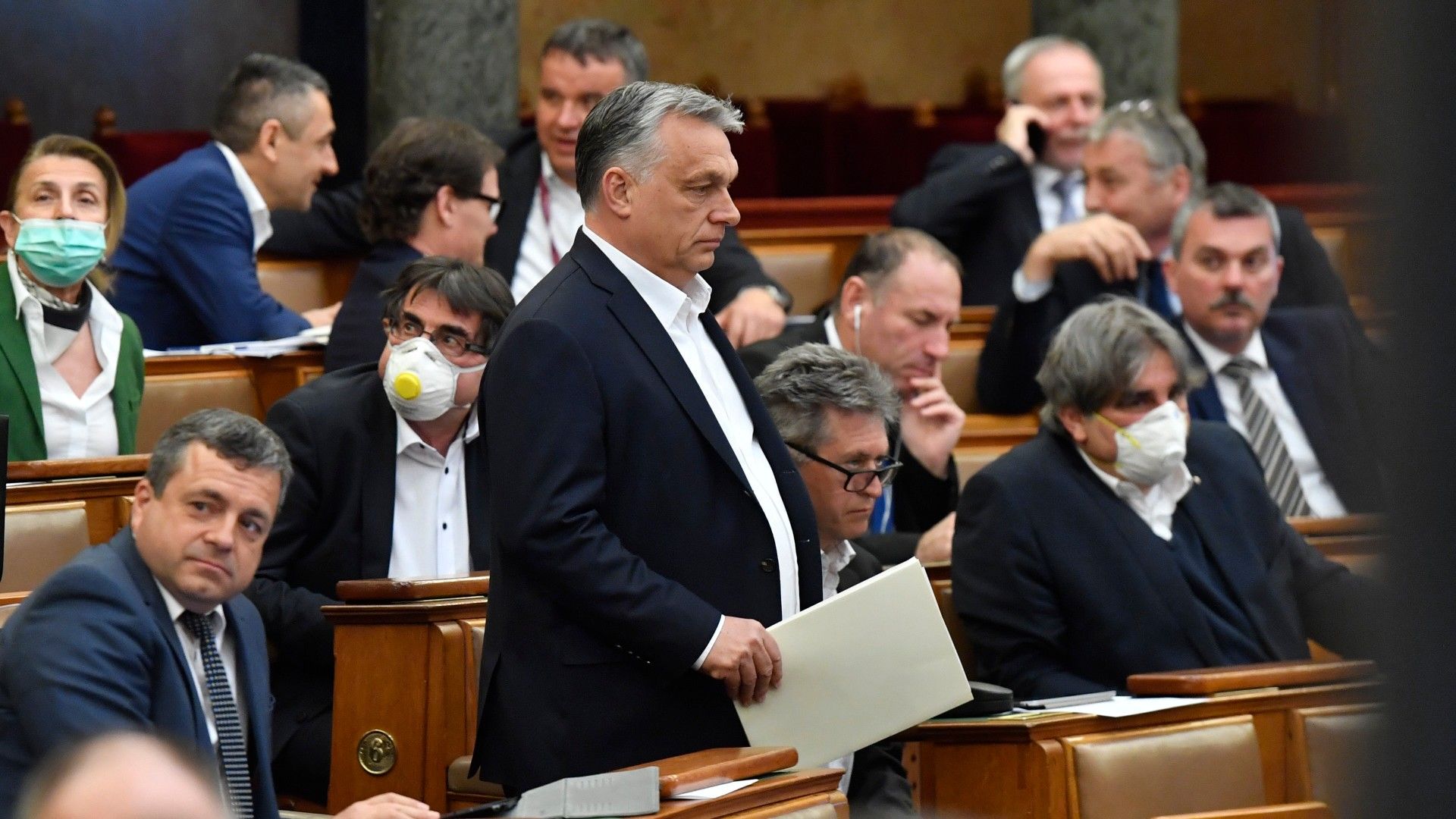
Viktor Orban arrives for the parliamentary session that extended his powers, 30 March. /Zoltan Mathe/MTI/AP
Viktor Orban arrives for the parliamentary session that extended his powers, 30 March. /Zoltan Mathe/MTI/AP
As the pandemic progresses, leaders will face their usual balancing act but on a much more acute level. Some members of the public will yearn for decisive action, while others will prefer a more studied approach.
In late March, Hungary voted through an emergency law that enables prime minister Viktor Orban to rule by decree without time limits. Hungary's move suggests a desire for strong leadership, while its model would not work for all countries.
In New Zealand, prime minister Jacinda Ardern has been emphatic yet empathetic while leading her country. Renowned for her communication skills, Ardern led New Zealand into a strict lockdown while reassuring children that the tooth fairy was still working and urging people to "be strong and be kind."
Opponents criticized the lockdown but the numbers look good: as of Friday 24 April, New Zealand had only suffered 17 COVID-19 deaths and 1,456 cases; that Friday brought just two new cases. The country has clearly explained alert levels and now feels able to move down from its fourth, highest level to the third, easing restrictions on swimming, surfing and fishing plus the delivery and takeaway of food.
New Zealand looks to be over the worst – and its communicative leader's approval ratings are as high as 80 percent.
As the pandemic progresses, leaders will face their usual balancing act but on a much more acute level. Some members of the public will yearn for decisive action, while others will prefer a more studied approach.
In late March, Hungary voted through an emergency law that enables prime minister Viktor Orban to rule by decree without time limits. Hungary's move suggests a desire for strong leadership, while its model would not work for all countries.

Viktor Orban arrives for the parliamentary session that extended his powers, 30 March. /Zoltan Mathe/MTI/AP
Viktor Orban arrives for the parliamentary session that extended his powers, 30 March. /Zoltan Mathe/MTI/AP
In New Zealand, prime minister Jacinda Ardern has been emphatic yet empathetic while leading her country. Renowned for her communication skills, Ardern led New Zealand into a strict lockdown while reassuring children that the tooth fairy was still working and urging people to "be strong and be kind."
Opponents criticized the lockdown but the numbers look good: as of Friday 24 April, New Zealand had only suffered 17 COVID-19 deaths and 1,456 cases; that Friday brought just two new cases. The country has clearly explained alert levels and now feels able to move down from its fourth, highest level to the third, easing restrictions on swimming, surfing and fishing plus the delivery and takeaway of food.
New Zealand looks to be over the worst – and its communicative leader's approval ratings are as high as 80 percent.
